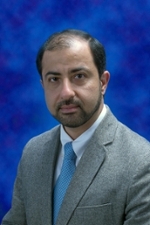Article Reviewed
Judy McKimm & Paul Kneath Jones (2018) Twelve tips for applying change models to curriculum design, development and delivery, Medical Teacher, 40:5, 520-526, DOI: 10.1080/0142159X.2017.1391377
https://doi.org/10.1080/0142159X.2017.1391377
Background
Despite being essential element for medical education, curriculum or program development are skills that training programs do not to teach due to lack of appropriate resources or experience.
Objective
This article described important elements that can guide curriculum development at all levels of education from undergraduate, graduate to postgraduate and continuing education.
Article highlights
Curriculum is an important tool across different level of learners, yet the definition of curriculum is not clear and is interpreted differently by institutions or individuals. This article provides a unified definition that is dynamic and based on different models, ranging from simple to complex, that can be used in curriculum development, implementation, and evaluation. The authors provide a platform for curriculum development and implementation using a well-thought core and supportive elements including identification of aims and objectives, assessment strategy, content of course and mission that is aligned with institution goals, competences and assessment methods, communicating a sense of urgency of course implementation, feasibility and suitability of proposed curriculum to internal and external environments. Perhaps the most eloquently described tip was about culture change that requires balancing the efforts across all three dimensions of change: from developing and delivering clear outcomes, mobilizing influences and interests, to enabling adaptation of new cultures. To ensure that a proposed curriculum is acquired and translated into practice, project management techniques are needed for operational planning and implementation using a cycle of needs assessment, curriculum design, delivery, review, and evaluation. This management plan will result in a curriculum that continuously vital and responsive to needs of all stakeholders.
Authors conclusion
The article describes 12 tips that guide the reader and build a framework for educators to utilize when planning the development of a new curriculum. These principles can be applied at all stages of design and implementation of different level of curriculum complexity and can help identify unique challenges early on that can be alleviated by robust management plan.
Reviewer's comment
This article describes a comprehensive and structured approach to course development across a continuum of learners and ensure alignment with institution goals. It further describes how the gaps between faculty leaders and followers and between individuals and academic institution can be diminished; thereby creating a very efficient and dynamic process in curriculum development.
Take home pearl
The premise of this proposed approach is to build a strong sustained curriculum that can be replicated and implemented in other academic institutions and can keep pace with innovation in medical education.

Educator
Abdulghani Sankari, MD, PhD
About the educator
Abdulghani Sankari is currently the director of Pulmonary & Critical Care Medicine Fellowship at Wayne State University. His medical education research interests include innovative simulation and curriculum development. His translational research interest is in the field of sleep and control of breathing.



